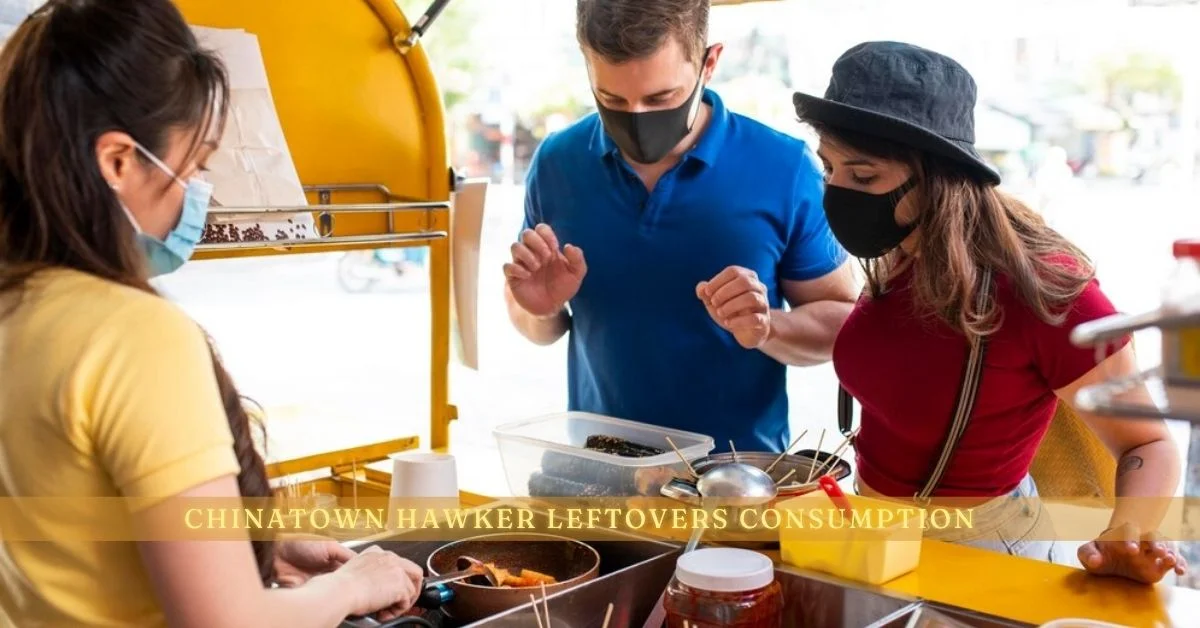Introduction to Chinatown Hawker Leftovers Consumption
Chinatown is a vibrant tapestry of culture, flavors, and aromas that tantalize your senses. Among its culinary treasures, hawker centers stand out as bustling hubs where food lovers gather to indulge in an array of delicious dishes. But what happens when the feast winds down and plates remain half-full? Enter the intriguing world of Chinatown hawker leftovers consumption. This practice not only connects us to rich traditions but also offers sustainable solutions for modern dining dilemmas. As we explore this fascinating phenomenon, prepare to discover how embracing these delightful remnants can enhance our appreciation for authentic cuisine while contributing positively to our environment. Join us on this flavorful journey!
History and Cultural Significance of Hawker Centers in Chinatown
Hawker centers in Chinatown represent a rich tapestry of culinary history and cultural exchange. These communal dining spaces emerged from humble street food origins, catering to the diverse populations that settled in urban areas.
As immigrant communities thrived, so did their need for accessible meals. Vendors set up stalls offering authentic dishes from their homelands, creating a melting pot of flavors and traditions.
The significance of hawker centers extends beyond mere sustenance. They symbolize resilience and adaptability, showcasing how food can bridge cultural divides. Families gather here not only to enjoy delicious meals but also to share stories and maintain connections with their heritage.
Today, these vibrant hubs continue to evolve while honoring traditional cooking methods. They serve as a testament to the evolving identity of Chinatown—a place where every bite tells a story steeped in history and community spirit.
The Concept of Hawker Leftovers Consumption and Its Benefits
Hawker leftovers consumption represents a blend of practicality and culinary delight. In bustling Chinatown, many diners leave with extra portions from their vibrant meals. This practice is not just about saving food; it embodies the spirit of community.
By enjoying these leftovers, patrons can reduce waste while relishing the diverse flavors that hawker centers offer. Each dish tells a story through its ingredients and preparation methods.
Moreover, consuming these remains allows for second chances at beloved dishes without feeling guilty about excess spending. It’s an economical way to experience more of what Chinatown has to offer.
This approach also fosters connections among friends and family as they share in exploring different tastes together. It’s a celebration of culture wrapped in every bite—one that’s both delicious and sustainable.
Common Dishes Found in Hawker Centers and Their Nutritional Value
Hawker centers are a treasure trove of culinary delights. They boast an array of dishes, each offering its own unique flavor profile and cultural background.
Chicken rice is a staple found in many stalls. It features tender chicken served with fragrant rice, often accompanied by chili sauce and ginger paste. Packed with protein, it’s both satisfying and nutritious.
Another popular dish is char kway teow. This stir-fried flat noodle dish combines shrimp, Chinese sausage, bean sprouts, and eggs. The combination offers a hearty meal rich in carbohydrates but should be enjoyed in moderation due to its oil content.
Vegetarian options like laksa provide a spicy coconut curry broth filled with noodles and beansprouts. Rich in flavor yet lighter on the palette, it’s full of essential nutrients from the vegetables used.
These dishes reflect not only taste but also nutritional diversity available at hawker centers across Chinatown.
How to Properly Consume Hawker Leftovers for Safety and Freshness
To safely enjoy hawker leftovers, start with proper storage. Refrigerate any uneaten food within two hours of purchase. Use airtight containers to keep flavors intact and prevent contamination.
When reheating, ensure the food reaches an internal temperature of at least 165°F (74°C). This step is crucial for killing any bacteria that might have developed during storage.
Consider the type of dish as well. Soups or curries may reheat better than fried items, which can lose their crispiness. If you want that crunch back, try using an oven instead of a microwave.
Always trust your senses—look for off smells or visible signs of spoilage before digging in. Trusting your instincts will help ensure a delightful culinary experience while keeping safety in check.
Sustainability and Environmental Impact of Hawker Leftovers Consumption
Hawker leftovers consumption presents a unique opportunity to address food waste in bustling Chinatown. By embracing these leftover meals, we reduce the amount of usable food that ends up in landfills.
Many hawker centers prioritize sustainable practices by sourcing ingredients locally and minimizing excess production. When patrons choose to consume leftovers, they not only enjoy delicious flavors but also contribute to eco-friendly efforts.
This practice supports local vendors who strive for balance between supply and demand. Every bite enjoyed is a nod toward sustainability.
Moreover, reusing these meals fosters community connections as it encourages conversations around mindful eating and responsible consumerism. It highlights the importance of valuing food resources while celebrating culinary heritage.
The environmental impact extends beyond individual choices; it encompasses collective actions that promote awareness about reducing waste within our communities. Engaging with hawker leftovers helps instill a culture where sustainability becomes second nature.
Conclusion: Embracing the Tradition and Flavors of Chin
The tradition of consuming Chinatown hawker leftovers is a beautiful fusion of culture, sustainability, and culinary delight. These vibrant food markets are more than just places to grab a quick meal; they represent the heart and soul of the community. Each dish carries stories and flavors passed down through generations.
By embracing hawker leftovers consumption, we not only reduce waste but also savor authentic tastes that define our cultural landscape. From rich noodles to fragrant curries, each bite connects us with diverse traditions while supporting local vendors.
As we enjoy these meals, let’s remember their significance in promoting sustainability within our communities. By choosing to relish every last morsel from hawker centers, we cherish both the food and the vibrant cultures behind them. The next time you find yourself at a bustling stall in Chinatown, consider extending your dining experience by exploring leftover options—it’s an adventure for your palate as well as your conscience.
Embracing this practice means celebrating flavor-filled memories while playing an important role in reducing waste. Let’s keep this lively tradition alive for future generations to experience its delicious heritage!











